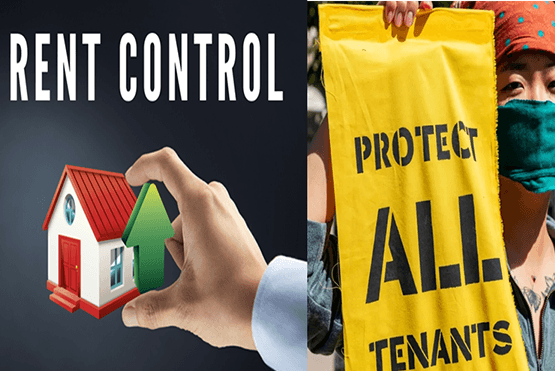Rent control and tenant protections have long been at the forefront of discussions surrounding housing policies. In the quest for affordable housing markets, these measures play a pivotal role in shaping the dynamics between landlords and tenants. This treatise delves into the intricacies of rent control, the historical context of tenant protections, and the far-reaching impact on affordable housing markets.
What is Rent Control?
Rent control, at its core, is a set of regulations that limit the amount landlords can charge for renting out their properties. These regulations are designed to protect tenants from exorbitant rent increases, ensuring housing remains accessible.
Importance of Tenant Protections
Tenant protections encompass a broader set of measures, including legal safeguards and rights afforded to tenants. These protections are crucial in maintaining a fair and secure rental environment.
Significance of Affordable Housing Markets
Affordable housing is a cornerstone of stable communities. The interplay between rent control and tenant protections directly influences the affordability and accessibility of housing markets.
Evolution of Rent Control
The roots of rent control trace back to the early 20th century, a response to housing shortages and affordability concerns. Over time, these measures evolved, adapting to the changing landscape of urban development and economic fluctuations.
Key Moments in Tenant Protections
Tenant protections have undergone significant developments, with landmark legislation solidifying tenants’ rights. Understanding this historical context provides insights into the intent and impact of current policies.
The link between Historical Trends and Affordable Housing
Exploring historical trends reveals patterns that shape contemporary affordable housing markets. The lessons learned from the past inform present-day policymakers in crafting effective regulations.
Pros and Cons of Rent Control
Positive Impacts
Rental Stability
Rent control fosters stability by preventing sudden and drastic increases in rental prices. This stability is especially beneficial for tenants on fixed incomes.
Tenant Security
Knowing that rent won’t skyrocket unexpectedly provides tenants with a sense of security, promoting long-term residency and community stability.
Negative Impacts
Disincentive for Property Owners
Critics argue that strict rent control measures can discourage property owners from maintaining or improving their properties, potentially leading to a decline in housing quality.
Impact on Housing Supply
Rent control can contribute to a shortage of rental properties as property owners may be less motivated to invest in new developments or maintain existing units.
Tenant Protections in Legislation
Overview of Existing Laws
Various jurisdictions have implemented tenant protection laws, outlining the rights and responsibilities of both landlords and tenants. These laws serve as a foundation for fair and transparent rental agreements.
Tenant Rights and Safeguards
Key tenant rights include protection against unfair evictions, the right to a habitable living space, and the ability to challenge unreasonable rent increases. These safeguards ensure a balanced landlord-tenant relationship.
Enforcement Mechanisms
Effective enforcement mechanisms, such as housing courts and regulatory agencies, play a vital role in upholding tenant protections. This ensures that tenants can seek redress when their rights are violated.
Economic Impact on Affordable Housing
Balancing Rent Control and Market Dynamics
Achieving a balance between rent control and market dynamics is crucial. Policymakers must navigate the delicate relationship between ensuring affordability and maintaining a healthy housing market.
Role of Government in Ensuring Affordability
Government intervention is often necessary to create policies that address the unique challenges of affordable housing. Subsidies, tax incentives, and strategic planning are tools governments can employ.
Challenges and Criticisms
Issues with Implementation
One common challenge is the effective implementation of rent control measures without unintended consequences. Striking the right balance requires careful consideration of local market conditions.
Opposition from Property Owners
Property owners, particularly small landlords, may resist stringent rent control measures, citing concerns about reduced income and disincentives for property maintenance.
Finding Middle Ground
Addressing the concerns of both tenants and property owners requires finding a middle ground. Collaborative efforts and open dialogue can contribute to the development of balanced policies.
The Role of Burstiness in Housing Policies
Understanding Burstiness in Policy Formulation
Burstiness, the ability of policies to adapt to changing circumstances, is essential in housing policies. Flexibility ensures that regulations remain effective in dynamic real estate markets.
Balancing Specificity and Flexibility
Crafting policies that are specific enough to address immediate concerns while remaining flexible to adapt to unforeseen challenges is a delicate balancing act for policymakers.
Impact on Housing Markets
Burstiness in housing policies can positively impact markets by promoting innovation, encouraging responsible property development, and adapting to economic fluctuations.
Perplexity in Tenant Protections
Analyzing Complexity in Legislation
Tenant protection laws can be complex, requiring a nuanced understanding. Analyzing the intricacies ensures that tenants are fully aware of their rights and can navigate legal processes effectively.
Ensuring Clarity for Tenants and Property Owners
Striking a balance between legal thoroughness and clarity is crucial. Clear communication ensures that tenants and property owners understand their rights and obligations without confusion.
Striking the Right Balance
Policymakers must strive for a balance between comprehensive tenant protections and simplicity to create laws that are accessible and effective for all stakeholders.
The Human Element
Stories from Tenants
Sharing stories of tenants navigating the rental landscape adds a human touch to the discussion. Personal experiences highlight the real impact of rent control and tenant protection.
Perspectives from Property Owners
Understanding the perspectives of property owners sheds light on the challenges they face. Balancing the interests of both parties is key to creating equitable housing policies.
Bridging the Gap Through Effective Policies
The human element underscores the importance of empathy in policymaking. Crafting policies that consider the experiences and needs of both tenants and property owners leads to more effective outcomes.
Future Trends in Rent Control
Innovations in Affordable Housing Solutions
Technological advancements and innovative solutions are shaping the future of affordable housing. Exploring these trends provides a glimpse into potential breakthroughs in housing policies.
Technology’s Role in Rental Market Dynamics
Digital platforms and data analytics are increasingly influencing rental market dynamics. Leveraging technology can enhance the efficiency and transparency of housing transactions.
Shaping the Future of Tenant Protections
Continued research and evolving societal needs will shape the future of tenant protection. Adaptable policies will play a crucial role in addressing emerging challenges in the housing landscape.
In summary of the above
Summarizing Key Points
Rent control and tenant protections are integral components of housing policies, influencing rental markets and shaping the experiences of both tenants and property owners.
Emphasizing the Need for Balanced Policies
The key takeaway is the importance of balanced policies that address the concerns of both tenants and property owners. Achieving a fair equilibrium is essential for sustainable and thriving housing markets.
Encouraging Continued Dialogue
Ongoing dialogue between policymakers, tenants, and property owners is crucial for refining and improving housing policies. A collaborative approach ensures that regulations remain responsive to the evolving needs of communities.
FAQs
a). Is rent control the same across all regions?
Rent control policies vary significantly between jurisdictions. Local governments tailor regulations to address unique housing challenges.
b). How do tenant protections impact landlords’ income?
While tenant protections aim to ensure fair treatment, some landlords argue that stringent regulations can impact their income and ability to maintain properties.
c). Can burstiness in policies lead to instability?
Burstiness, when carefully managed, contributes to policy adaptability without compromising stability. It allows for responsiveness to changing market conditions.
d). Are there success stories of affordable housing policies?
Yes, there are instances where well-designed rent control and tenant protection policies have positively impacted housing affordability. Case studies offer valuable insights.
e). How can technology address challenges in the rental market?
Technology can enhance transparency, streamline transactions, and improve data-driven decision-making, contributing to a more efficient and equitable rental market.




